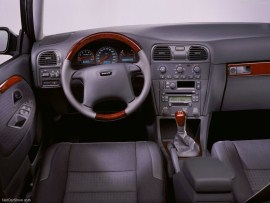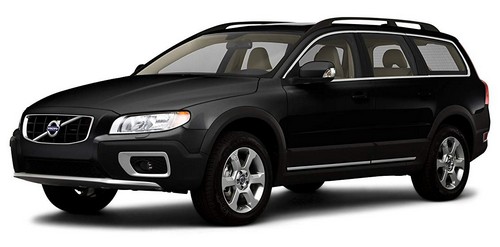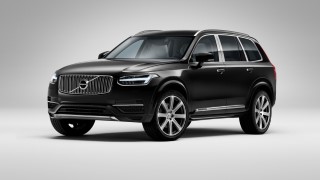Volvo S40 / V40 1996 – 2004 – POLOVNJAK, MOTORI

Volvo S40
Udruženim snagama Volvo-a i Mitsubishi-a, predstavljen je novi Volvo S40 / V40 kao zamena dotrajaloj seriju 440 / 460. Iako izgledaju više stilizovani, ovi automobili u principu su isto što i Mitsubishi Carisma, deleći zajedničke GDI motore i menjače. To znači da je najmanji Volvo dobro konstruisan i ekonomičan, ali ipak u poređenju sa konkurencijom čini se da malo zaostaje.
Bezbednost više nije bio jak prodajni adut volvoa. U svakom slučaju njegovi rivali bili su bar jednaki u smislu bezbednosti, tako da nije imao prave konkurentske prednosti. Do trenutka kada je nova serija 40 lansirana 1996., Volvov jednoličan oblik koji je identifikovao švedske automobile, bio je prepreka za prodaju. Jasno je bilo vreme da se krene dalje. Ovaj novi model predstavlja stilsko oživljavanje brenda sa mnogo više krivina. Ovo daje opšti atraktivniji izgled. mechanically, većina benzinski motori su Volvo, osim IDE 1.8 iz Mitsubishi-ja, dizeli su pozajmljeni iz Renoa.
Unlike 440 nova serija 40 je bila prijatno stilizovan, koliko u skladu sa savremenim trendovima stajling, sa čistim linijama i mekših ivica koje su u oštrom kontrastu sa prethodnim modelima Volvoa.
Volvo S40 i V40 su u osnovi isti, “S” označava limuzina, model “V” stoji za karavana. Telo se razlike u zadnjem deklu i zadnjim vratima, prednji deo je isti. Mehanički oba modela su isti.
Najpreporučljiviji su modeli proizvedeni posle 2000., oni su i najbolje opremljeni.
KOMFOR – Volvo S40/V40

Unutrašnjost Volvo S40 i V40 deluje pristojno, ali sam kvalitet izrade nije jača strana ovog Volvoa, što je takođe najviše izraženo kod prve generacije automobila. Ono što je na zavidnom nivou su bezbednost i oprema koja, čak i u osnovnoj verziji, nudi dosta toga, pa svi modeli imaju četiri airbag, električne podizače i podešavanje vozačevog sedišta po visini kao standard.
Nakon četiri godine od početka proizvodnje, znači na modelima od 2001. pa na dalje, osvežena je unutrašnjost, restilizovani su branici i unapređen je sistem oslanjanja, a 2002. je dodato još opreme.
MOTOR – Volvo S40/V40

Ponuda motora je dosta velika, pa idemo redom. Benzinci kreću od 1,6 i kako to obično biva najmanji ne savetujemo, jer mu fali snage gotovo uvek. 1,8 GDI sa svojih 125 konja nije loš izbor, kao ni 2,0 slabiji benzinac sa 140 horsepower. Tu je i 2,0T motor sa 160 KS, koji je uvek spreman da odgovori na gas i sa lakoćom se izvlači iz kritičnih situacija. Taman je na granici onoga što šasija može da podnese. Postoji i T4 verzija, ali je 200 horsepower, ispostavilo se, previše za ovaj automobil.
Dizelaša ima dva – 1,9 sa i bez turbine. Ni jedan ni drugi se ne mogu pohvaliti tihim radom, a povrh svega toga, verzija bez turbine odbija da vuče barem razumno. therefore,, ako baš pikirate dizela, uzmite motor sa turbinom. Oba dizelaša u proseku troše oko 5.5 – 6 litara na sto kilometara sa izuzetno lakom nogom na gasu, a od benzinaca je najekonomičniji Mitsubishi-ev 1,8 GDI motor sa prosekom od 5,7 litara bezolovnog benzina. Podrazumeva se da je motor u odličnom stanju, ako želite ove rezultate.
Petostepeni manuelni menjač je standardan, uz doplatu je išao četvorostepeni automatsik menjač, a pogon je bio preko prednjih točkova.
Motori i modeli:
1996.: Predstavljen novi Volvo S40 / V40 sa petoro vrata. Kupcima je nuđen izbor benzinskih motora 1.8 16V (116 KS), 2.0 (137 KS), 1.9 TD turbo dizel, petocilindrični, 90 KS; 1.6 16V motor (105 KS).
1997.: Familiji pridružen i 2.0 Turbo kao i 1.9 T4.
jesen, 1998.: unapređenje suspenzije i kočnica, novi motori 1.8i ( GDI motor sa Mitsubishi, direktnog ubrizgavanja benzina, 125 KS), 1.9 16V (140 ili 200 KS);
proleće, 1999.: 1.9 TD ( turbo dizel direktno ubrizgavanje, 95 KS);
2001.: Kompletan redizajn vozila. Promenjen prednji izgled i akcenat se baca na ekonomičnost motora; 2,0 litarski motor (136 KS); 2.0 16V (165 KS); 1.9 16V (200 KS); 1.9 TD (Turbo, common rail, 102 ili 115 KS);
jesen, 2002.: mali restailing ( nova rešetka , farovi , promene na tabli );
2003.: premijera sledeće generacije Volvo S40.
KVAROVI – Volvo S40/V40
Vlasnici novih Volvo S40 / V40 modela su pozivani na vanredni servis zbog problema sa curenjem benzina, kočnicama i airbag -ovima, pa proverite kod prethodnog vlasnika da li su svi ovi problemi otklonjeni o trošku proizvođača u garantnom roku. Ako se odlučite za neki od prvih modela, proverite dobro enterijer, jer nije baš najkvalitetnije sastavljen.
Volan okrenite do kraja u oba smera i ukoliko ima nekih čudnih zvukova obiđite taj polovnjak, a obratite pažnju na kompletan trap, koji na našim putevima brzo strada na ovom Volvou. Za kraj, dobro proverite svu elektroniku na kolima, jer je to jedan od najčešćih kvarova na Volvo S40. also, Mitsubishi GDI agregati su pomalo osetljivi na loše i gorivo nižih oktanskih vrednosti, pa predlažemo sipanje kvalitetnijeg benzina.
Na tržištu polovnih automobila ima dosta onih sa velikom kilometražom pa se preporučuje oprez pri kupovini. Birajte auto, ukoliko je to moguće, sa servisnom knjižicom. U praksi se pokazalo da model Volvo V40 drži duže cenu od Volvo S40.
1.8 GDI motor. Originalni Mitsubishi motor sa direktnim ubrizgavanjem mogu imati problem zbog lošeg kvaliteta goriva. Često je dovoljno da se reprogramira ECU motora, da se sve bude opet OK.
1.9 D dizel motora (102 i 115 KS). Za određena vozila proizvedena do sredine 2002., biće problema sa zupčastim kaišem ili sa pred zatezačima.
1.9 D dizel motor, do 2002. mogući povremeni problem sa turbo punjačem.
Problem sa remenicom alternatora, kod motora 1.9 D, pocepa kaiš, zamena žute remenice sa crnom remenicom.
Kod modela napravljenih do aprila 2002., motor 1.9 to 102 i 115 KS, dolazi do pucanja zupčastog kaiša, što izaziva kvara motora.
Za vozila sa dizel motorima, kvar plivajućeg zamajca, simptomi motor radi neravnomerno i čukanje pri promeni brzina.
Kod dizel motora proizvedenih posle 2000., je čest gubitak snage usled začepljen EGR ventil, potrebna zamena.
Dizel motori iz 2000., problem u sistemu za ubrizgavanje goriva, problem je uglavnom uzrokovan zaprljanošću dizni.
Slaba tačka kod menjača dobijenih od Renoa su curenje ulja. Dešava im se da nemože da se ušalta u petu brzinu, što je znak da se odmah poseti servis. Potcenjivanje kvara dovodi do većeg kvara menjača. Tokom test vožnje, neophodno je da proverite funkcionisanje prenosa.
Vozila proizvedenih pre 1997., često imaju problem sa loše podešenim trapom, izaziva da vozilo vuče u stranu, kao i brzo lizanje guma.
Automobili iz modelske 2000. su pozvani u servis, zbog neispravnih kočionih klipova na prednjim točkovima.
Voda može ući u servo uređaj kočenja, što možda izazivati gubitak sposobnost zaustavljanja.
Tokom vremena, izbledeti siva / crna zaštitna plastika oko vozila.
Prilikom podizanja poklopca motora šarke se trljaju o nosače brisača.
Osetljiva plastika na prednjoj konzoli na ogrebotine.
U prvim modelima problem sa elektromotorima, koji kontrolišu rad brava vrata.
Povremeni problemi sa digitalnim displejom količine goriva.
Pri podešavanju sedišta mehanizam škripi, ako se ne podmazuje periodično.
Pre kupovini obratite pažnju na:
– amortizeri, šolje su podložne habanju i preporučuje se zamena na svakih 60000 km
– brakes, proverite da li auto vuče na neku stranu pri naglom kočenju , kao i da li se svi točkovi lako okreću. Diskovi su podložni brzom habanju.
– motor, generalno su dobri. Na 1.8 i 2.0 modelima zupčasti kaiš može da izdrži i do 150000 km, ali se preporučuje zamena svake četvrte godine.
Polovnjak Volvo S40 cene – pregled

Hi there, I am Mladen and I am an auto enthusiast. I started this blog years ago to help like minded people share information about latest cars, car servicing ideas, used car info, exotic cars, and auto technology. You will find helpful articles and videos on a wide variety of cars – Audi, Mercedes, Toyota, Porsche, Volvo, BMW and much more. Ping us if you have anything cool to share on latest cars or on how to make older cars more efficient, or just want to say hi!


